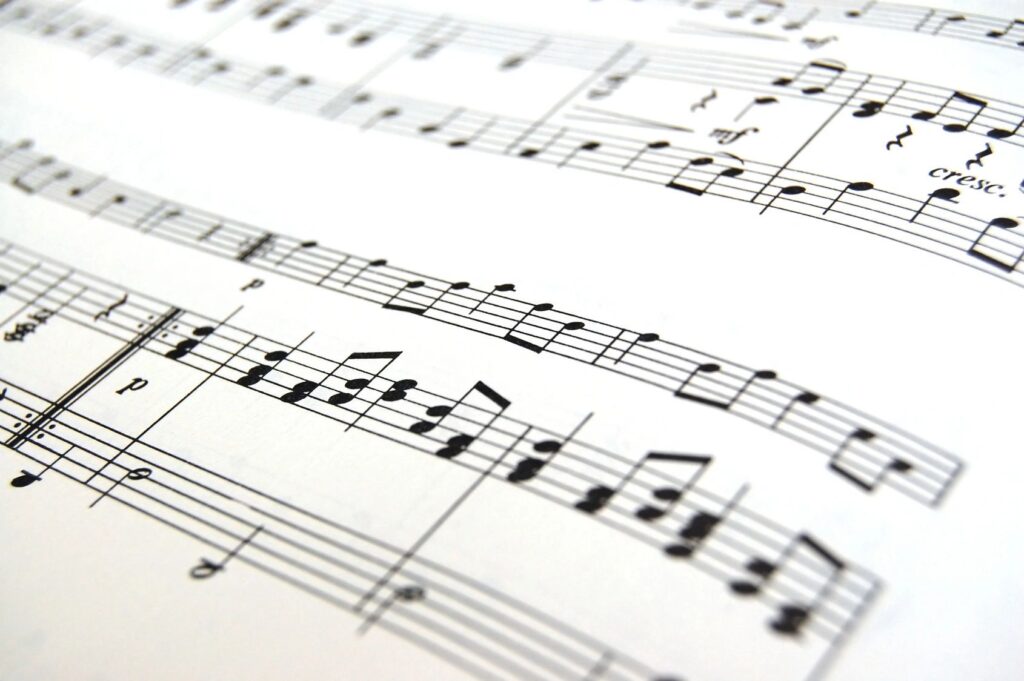
Movie music: Telling the story
Will Fulton, Contributing Writer
Music is a medium that can be consumed without being accompanied by a visual aid. Film, however, is rarely consumed without music in one way or another.
Film is a medium that can be described as auditory and visual. These two qualities exist simultaneously in a motion picture to tell a cohesive story. Visual and auditory stimulation is one of the most frequently used methods of storytelling in the world.
While you can tell a story through a painting or a symphony, bringing these two things together packs a bigger punch that one of the two alone.
Films have been dominating the artistic landscape of society since the early 20th century. Throughout the lifespan of Hollywood, there have been movies that have taken special advantage of the auditory experience. The following films are two of the many films that use music to tell the story.
The first film is “Baby Driver.” When the word “musical” is used to describe a movie, most people would probably think of movies where the main character breaks out in song for seemingly no reason. This is not the case with this movie.
While the characters in this film do not start randomly singing, the song choices are used to demonstrate the direction of the plot, movement in a given scene and the emotion of the characters.
According to composer and orchestrator, Robin Hoffman, “Music can serve the movie by getting into the emotions of the characters. A face with a neutral expression can be pushed into ‘feeling’ many different things just by what kind of music is used.”
In the opening scene of “Baby Driver,” The song “Bellbottoms” plays over a bank robbery. The main character is sitting in the perpetrator’s getaway car while listening to the song while his movement and the movement around him synchronizes with the rhythm of the song.
The action and movement in multiple scenes are based around different songs and were filmed with those songs in mind. This is done to put the audience in the main character’s headspace.
Director of “Baby Driver,” Edgar Wright, said in an interview that the composer of the movie, Steve Price, only wrote around 30 minutes of additional score. The score was formulated to serve the actual songs that each piece led into.
The opening scene starts out with strings playing a single note while ringing can be heard. The ringing is there because the main character has tinnitus, which plays a large part in the plot. When the crooks he is driving for go into the bank to rob it, the song “Bellbottoms” begins, which puts the audience in the moment with Baby.
When the crooks start robbing the bank, the song’s tempo becomes faster and the instrumentation becomes more frantic, giving a representation for the mood of the scene. This is just one example of how music is used to direct a scene, but there is another way music is used.
The main character, Baby, and his love interest, Deborah, both use music to represent themselves. When they first meet, they remark about how few songs there are about a “Deborah” and how many songs are about a “Baby”.
The second film is “West Side Story.” This Oscar award winning film, which is based on the Tony award winning stage musical, is legendary in the worlds of both music and film. Composer Leonard Bernstein built nearly all the music in the show on what is known as a tritone or “The Devil’s Interval.”
It is difficult to understand what exactly this is if you do not know music theory, but a tritone is a musical idea that contains three notes. It is dissonant at first but then resolves to a pleasant note. This is the foundation of “West Side Story”.
The entire score is built around discord, mimicking the main conflict of the movie. The two gangs, the Jets and the Sharks, are the discord and the star-crossed lovers, Tony and Maria, are the resolution to their conflict. Their relationship is not fueled by the prejudice that drives the rival gangs.
The way the music demonstrates this is in the resolution of the two main themes in the music. Both the Jet’s theme and Tony and Maria’s theme are tritones, but the difference is the latter resolves while the former does not.
Tony and Maria’s theme is the chorus to the song “Maria,” which is dissonant at first but then resolves when tony finishes saying Maria’s name. Each syllable in her name is the one of the three notes in the tritone.
This style of using music to tell the story is very similar to how operas were written. Operas were usually written so that each character would have their own musical theme or what is called a leitmotif. This is now a very common thing in film as well as theatre, which is apparent in “West Side Story.”
While many films have exchanged thematic scores for more of a basic musical aesthetic, these two films are two examples of how music can be utilized to further a director’s vision.
